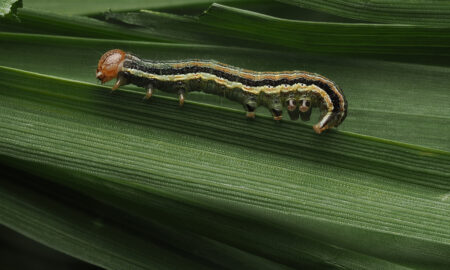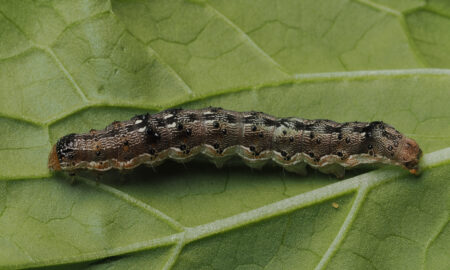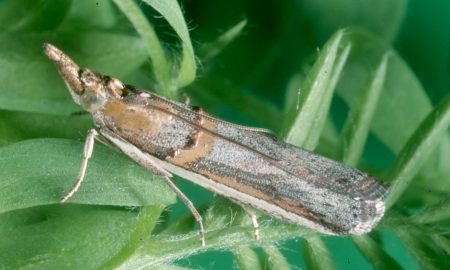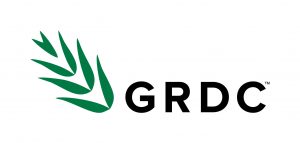This year’s warm autumn and early winter have been conducive to aphid growth, with green peach aphid (GPA, Myzus persicae) seen in some young canola crops in Victoria’s Northern Country and border areas of southern New South Wales. These observations have been followed by reports of positive turnip yellows virus (TuYV) test results and symptoms in canola in these regions, particularly irrigated paddocks.
To recap, TuYV is the most economically damaging virus of canola in Australia, and the primary vector is GPA. Canola is most susceptible to yield losses from TuYV during the early stages of crop development. Prevention and early intervention are crucial to curb TuYV-induced yield losses; once GPA has infested and spread the virus to more than 50% of plants prior to stem elongation, it’s unlikely to be economic to apply insecticides.
Here we share some recent questions and answers fielded by our team at Pestfacts Southeastern about the current incidences of GPA:
Can green peach aphid still transmit TuYV if canola seed has been treated with neonicotinoid insecticide dressings?
Insecticide seed treatments are an important tool in integrated disease management, however they do not eliminate the risk of TuYV.
Two recent field trials found that neonicotinoid seed dressings provided little reduction in TuYV spread in emerging canola.1 One possible reason could be the recent evolution of metabolic resistance to neonicotinoids in GPA in Australia.2 This resistance has been shown to reduce the effectiveness of seed treatments, increasing the risk of early aphid establishment in young canola crops.
Cesar Australia researchers are conducting field trials to further assess the role of neonicotinoid and other commercial seed treatments in controlling GPA that possess insecticide resistance.
However, even before GPA were found to have evolved resistance to neonicotinoids, laboratory studies indicated that imidacloprid seed dressings did not fully protect against TuYV infection.3
How do I know if spraying is warranted for green peach aphid and TuYV transmission?
GPA is highly efficient at transmitting TuYV and can disperse rapidly; the time-window for a targeted insecticide spray may be quite narrow, so in-crop monitoring is critical.
A GPA monitoring strategy has been developed by DPIRD WA to provide spray decision support for growers in high virus risk scenarios to increase the likelihood of effective TuYV control. This work is funded by GRDC project DAW2305-003RTX ‘Effective virus management in grain crops’.
It takes very few GPA per plant to transmit TuYV, and there is a relationship between the GPA infestation rate (% of plants with GPA present) and TuYV incidence in susceptible canola crops.
Recent research1 suggests a foliar insecticide application is most effective when applied during the early stages of GPA infestation. Currently available insecticides can knockdown the initial vector population and disrupt virus spread, providing residual protection to plants from future infestation. Spraying insecticides too early, before aphids arrive in the crop, or too late, once aphids have already transmitted TuYV to a high percentage of the crop, is less likely to have an economic benefit.
Therefore, the objective of a foliar insecticide application is to suppress the GPA population substantially enough to limit TuYV transmission prior to stem elongation.
The younger the crop is, the more vulnerable it is to TuYV-inflicted seed yield and quality losses and therefore the more stringent monitoring and management needs to be.
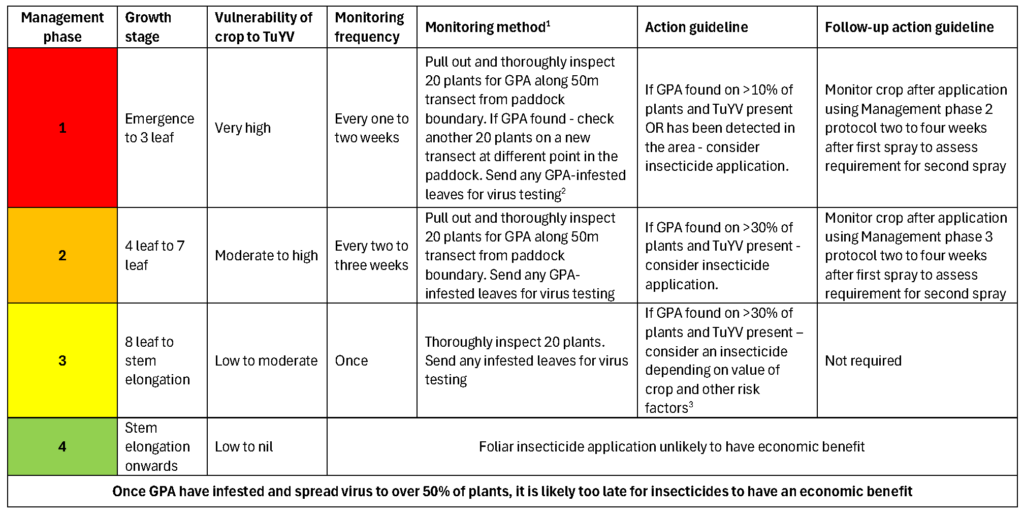
2 Requires access to a diagnostic laboratory.
3 Risk of yield losses can depend on the TuYV strain present and the sensitivity of the canola variety sown, and losses may be greater in the presence of abiotic stress
Green peach aphid monitoring strategy for effective turnip yellows virus control, developed by DPIRD, WA. Table provided by Benjamin Congdon, DPIRD.
What constitutes high risk of TuYV spread?
Firstly, as TuYV originates from plant hosts outside of the crop (virus reservoir) the proximity and size of the virus reservoir is important. For example, an emerging canola crop neighboured by a paddock of infected volunteer canola infested by GPA is at high risk of early TuYV infection.
Secondly, environmental conditions are crucial – particularly temperature. GPA populations expand faster and fly more when temperatures reach >20°C, meaning they spread TuYV faster and further. TuYV transmission is also more efficient under warmer conditions, meaning fewer aphids are required to transmit virus to a plant, further accelerating spread.
Be mindful of these factors when considering whether to spray an insecticide.
What foliar sprays are effective in controlling green peach aphid?
Green peach aphid has evolved resistance to various chemistries, including organophosphates, synthetic pyrethroids, neonicotinoids and carbamates. Some populations in WA, Qld, NSW, Vic and SA also have low-level resistance to sulfoxaflor (Transform™).
Where foliar insecticides are required to control GPA, we recommend applying a single application of flonicamid (Mainman®), afidopyropen (Versys®) or sulfoxaflor (Transform®). When using Transform™ to control green peach aphids, ensure the product is applied as per label recommendations and that thorough coverage is achieved.
If multiple sprays are needed, rotate between these products as part of a resistance management plan. For more information on best chemical practices, see the GPA best management practice guide.4 This guide includes a chemical windowing strategy, which has been developed by industry experts and endorsed by CropLife Australia.
Can we rely on parasitoid wasps to prevent TuYV transmission?
The role of parasitoid wasps in TuYV management is unclear. There is a lag time between the aphid being injected with a wasp egg and the aphid becoming a mummy, and this is likely to be slower in winter than in spring. Our hunch is that parasitoid wasps are more important for managing aphid direct feeding damage than for preventing virus transmission. Current best management practices for TuYV refer to an integration of cultural and chemical controls.1
How can I get samples tested for TuYV in Victoria and NSW?
If you suspect TuYV in young canola paddocks, please contact your relevant state department of agriculture to have samples tested for virus:
- New South Wales – Joop van Leur, NSW DPI, joop.vanleur@dpi.nsw.gov.au
- Victoria – Mohammad Aftab, Agriculture Victoria, mohammad.aftab@agriculture.vic.gov.au
What is the insecticide resistance status of green peach aphid in my region?
Cesar Australia is offering insecticide resistance testing of GPA to grain growers and advisors. Visit our testing service page for more information.
Want more information?
1 Congdon et al. 2025, Turnip yellows virus and its vector, the green peach aphid, in canola: the 2024 epidemic in southern New South Wales and management options
2 Kirkland et al. 2023. P450-mediated resistance in Myzus persicae (Sulzer) (Hemiptera: Aphididae) reduces the efficacy of neonicotinoid seed treatments in Brassica napus
3 Coutts et al. 2010, Control of Beet western yellows virus in Brassica napus crops: infection resistance in Australian genotypes and effectiveness of imidacloprid seed dressing
4 Green peach aphid: Best management practice guide (GRDC).
Acknowledgements
Thanks to Joop van Leur (NSW DPI) for providing field intelligence.


